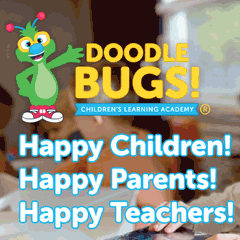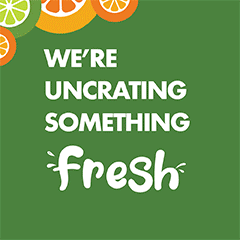Ahead of the Curve
With the arrival of another school year, we wanted to take a closer look at some of the area’s top private high schools to find out how they are preparing their students for the classroom and beyond. We worked directly with the schools to glean detailed information in key areas like average SAT scores, the percentage of students attending four-year colleges, tuition rates, student-to-teacher ratios and more. We also spoke to officials from some of these schools to gain a better sense of the benefits of a private education and it what it can provide not only students, but their families as well.

Speaking Privately
Is a private education right for your child? Here are some questions you may want to be asking:
In addition to the quality education students receive, how do private schools work to provide a sense of community for both the student and their families?
Private schools often go beyond providing quality education to foster a strong sense of community among students and their families. These efforts contribute to a strong, supportive community that extends beyond the classroom, enriching the overall experience for students and their families.
—Sarah Luter, director of communications, office of advancement, Bishop Moore Catholic High School
Have you noticed students taking interests in new fields of study in recent years and if so, which areas?
As our world becomes more dependent on technology, careers in that area have skyrocketed. Many of our students are planning to pursue technology-based careers, and Foundation Academy is preparing them for those paths. We offer classes and clubs geared toward television production, digital arts, coding, robotics, engineering and more. Our youngest students actively participate in STEM activities in the classroom, and our upper school campus is set to open a new classroom building with an Innovation Center in October.
—Joseph Cioffi, director of marketing and communications, Foundation Academy
Lake Highland’s Upper School students are increasingly interested in fields that align with the evolving demands of the 21st-century job market. Accordingly, our STEM courses have seen an increase in enrollment, specifically our computer science and innovation courses. … Our state-of-the-art, four-story Porter Family Center for Innovation and Academics houses our Innovation Hub, which plays a pivotal role in guiding students toward these interests by providing resources, mentorship and hands-on experience. Our hub helps students understand real-world applications of their studies and prepares students for future careers in these emerging fields.
—Jennifer D’Andrea, upper school associate director of curriculum and instruction, Lake Highland Preparatory School
While the overall fit is important for the student, what are some of the other questions parents of prospective students should be asking when forming their decision on where their child should attend school?
Choosing the environment in which your child will grow up is one of the most crucial decisions a parent can make. Since students often spend as much or even more time at school than at home, it’s essential for parents and students to align their personal goals and values with the school’s mission. Key factors to consider include the school’s culture, curriculum, academic standards, extracurricular offerings, and focus on college or career readiness.
—Megan Fleming, creative marketing & alumni manager, The First Academy
In what ways are private school teachers given more freedom to be creative in the classroom and how does that foster improved academic outcomes?
Private school teachers often enjoy greater autonomy in their curriculum design and teaching methods. Without the constraints of standardized testing to the same extent as public schools, teachers can take a more individualized approach to instruction, tailoring lessons to the unique needs and interests of their students. This freedom fosters a more engaging learning environment where teachers can incorporate project-based learning, experiential activities and interdisciplinary studies that encourage students to think critically and solve problems creatively. The result is often higher student engagement, deeper understanding of material and more meaningful connections between subjects—ultimately leading to improved academic outcomes.
—Alex Birchenall, assistant head of school, Windermere Preparatory School
Private school teachers, including those at Trinity Prep, are often afforded greater autonomy in how they deliver their curriculum, allowing them to be more innovative and responsive to the needs of their students. This freedom enables teachers to design lessons that are not only academically rigorous but also engaging and relevant to students’ interests. By integrating interdisciplinary approaches, project-based learning and hands-on experiences, teachers can inspire students to think critically and creatively. This flexibility in teaching not only enhances student engagement but also fosters deeper understanding and retention of material, ultimately leading to improved academic outcomes and a more enriching educational experience.
—Denise Turner, director of admissions and financial aid, Trinity Preparatory School
How do smaller class sizes help private schools give students more individualized attention and what are the major benefits of having those strong relationships?
In a smaller, student-centered classroom, all students experience high levels of engagement, feedback and collaboration. We believe in the development of the whole child through strong and meaningful relationships with teachers and peers as we prepare our students to become global citizens who will thrive as leaders and change agents in the world. Lake Mary Prep students know that the teachers truly care for them, and this makes all the difference in the classroom as students learn difficult concepts, persevere through challenges and maximize their potential.
—Amy Petrousky, secondary school principal, Lake Mary Preparatory School
By The Numbers
SCHOOL STATS
| Tuition | Enrollment | Honors Offerings | Student to Teacher Ratio | AP Classes |
Students Attending 4-Year Colleges
|
|
| Bishop Moore | $15,528** | 1,551 | 59 | 25:1 | 29 | 100% |
| Foundation Academy | $14,500 | 404 | 27 | 11:1 | 15 | 98% |
| Lake Highland Prep | $29,650 | 795 | 83 | 13:1 | 32 | 99% |
| Lake Mary Prep | $19,900 | 177 | 32 | 12:1 | 21 | 100% |
| Montverde Academy | $23,213 | 798 | 21 | 17:1 | 32 | 88% |
| The First Academy | $24,780 | 512 | 44 | 14:1 | 21 | 100% |
| The Geneva School | $18,900 | 266 | 28 | 10:1 | 10 | 100% |
| The Master’s Academy | $17,010* | 349 | 20 | 20:1 | 19 | 98% |
| Trinity Prep | $27,950 | 525 | 44 | 11:1 | – | 99% |
| Windermere Prep | $28,610 | 644 | 36 | 13:1 | 2 | 100% |
*Increase for grade 12
**Increase for non-Catholic students
SAT SCORES
| SAT | Math | EBRW | |
| Bishop Moore | 1124 | 554 | 570 |
| Foundation Academy | 1358 | 679 | 679 |
| Lake Highland Prep | 1295 | 650 | 645 |
| Lake Mary Prep | 1249 | 625 | 624 |
| Montverde Academy | 1100 | 550 | 550 |
| The First Academy | 1153 | 565 | 588 |
| The Geneva School | 1274 | 626 | 648 |
| The Master’s Academy | 1172 | 576 | 596 |
| Trinity Prep | 1329 | 666 | 663 |
| Windermere Prep | 1197 | 597 | 599 |










